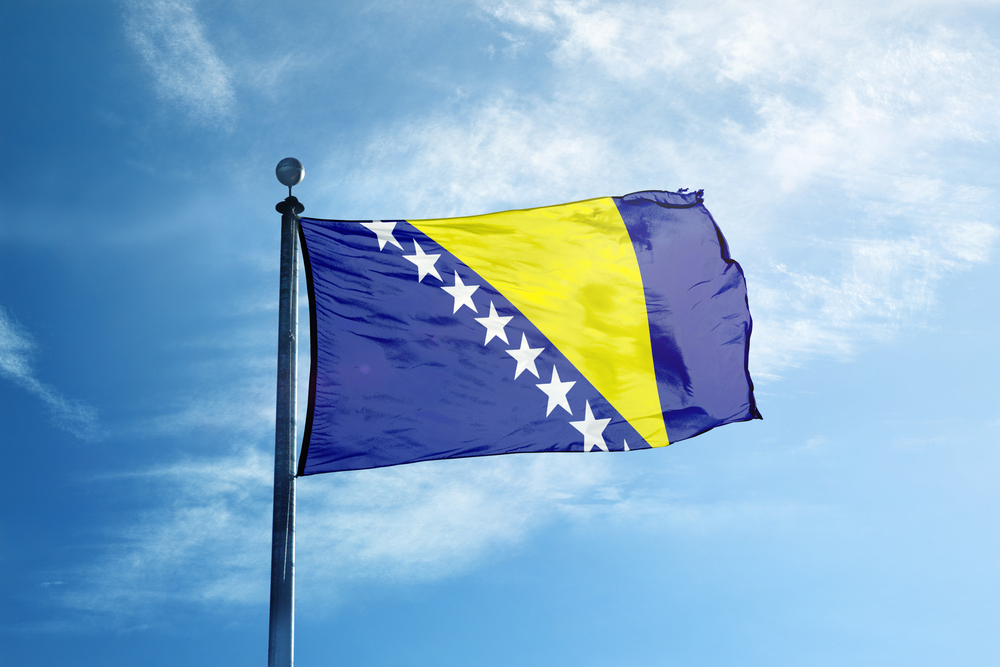
Bosnia and Herzegovina: a platform for radical Islam in the heart of Europe
Increasing migration to Western European countries has long turned from a thought-provoking process into a sad routine of radically changing the cultural face of the Old World. Generations of Middle Eastern and North African descendants have grown up in England, Germany or France, standing between the post-Christian and the new Islamic worlds. Radical Islamists no longer need to train a fiery preacher or a suicide bomber thousands of miles away for future purposes. Wahhabism exists wherever there are conditions for its spread. However, when talking about both the “historical homeland” of radical Islam and the “new expanses” of its extent, one often overlooks a seemingly inconspicuous territory. In the heart of Europe, in the northwestern part of the Balkan Peninsula, a state project known in international relations as Bosnia and Herzegovina has existed for three decades, torn by internal contradictions. It is a country where the ideas of radical Islam have been thoroughly rooted, fertilized, and have now produced abundant sprouts. Obviously, this happened with serious outside support.
You don’t hear about Bosnia and Herzegovina very often (or rather never) in the context of terrorist attacks. In different countries, we often hear that something has happened, for example in Austria they might open fire on pedestrians with automatic weapons, in London a fanatic crushes people while driving a bus, and in Turkey a suicide bomber blows herself up. In Bosnia there was once a brutal war over the Yugoslav heritage between three ethnic groups: Serbs, Croats and Bosniaks. After the collapse of socialist Yugoslavia, a referendum on Bosnia and Herzegovina’s independence took place without the participation of the Serbs living there. As a result, in 1992 they proclaimed their own state entity, the Republika Srpska, and announced their secession from Bosnia and Herzegovina. The Bosnian Croats, in return, created their own autonomy called Herceg-Bosna. The Bosniak political entity became the Bosniak republic. The unwillingness to cede power to other peoples in their historical lands within a single state initiated a military conflict. Despite their common Slavic ancestry, all three nations differed in their religious views and had a complicated history of relations in the past. The Serbs were Orthodox, the Croats were Catholic, and the Bosniaks were Muslims. The fighting between each side of the conflict was accompanied by brutal ethnic and religious cleansing.

All parties achieved peace through the Dayton Peace Agreement, preserving the country declared by Bosnia and Herzegovina in 1992. Bosnia actually became a union of two autonomies, the Republika Srpska and the Muslim-Croat Federation. The former took shape as an entity of Serbs in the lands where they were the majority (the north and southeast of the country). By analogy, a Muslim-Croat Federation was formed in the remaining territory, a common entity of Bosniaks and Croats. The Federation was divided into ten cantons, each with its own constitution. In addition, the autonomous district of Brčko, which was placed under international administration under the Dayton Peace Agreement, emerged.
Radical Islam owed its active penetration into Bosnia to the activity of the local Muslim leader, Alija Izetbegovic, the first president of Bosnia and Herzegovina. It was at his invitation that fighters from Afghanistan, Pakistan, Algeria, Egypt, Saudi Arabia, Yemen and Syria arrived in the region during the 1992-1995 civil war. Izetbegovic established relations with Al-Qaeda, and there were rumors of his personal meeting in Sarajevo with bin Laden in 1993. The Al-Mujahideen detachment, composed mainly of Muslim mercenaries, fought on the side of the Bosniaks. It is believed that after the war the radicals did not particularly seek to return home. On the contrary, many of them settled in Bosnia and Herzegovina, reuniting with their families and spread their way of living under the Izetbegovic government.
Apparently, the fighters, who retained ties with their historical homeland, have now become agents of the Islamic State (IS). Hundreds of parallel jamaats operate on the territory of Bosnia and Herzegovina, not subordinated to the official Muslim spiritual authorities of the country. After the Bosnian war, it was advantageous for the U.S. intelligence services to keep a huge number of radicals in one place, which made it easier to control them. At the same time, Western patronage prevented the Serbs from achieving their goals in the war. The head of the UN mission, Jacques Klein, also spoke about this. According to him, the U.S. intervened too late in the Bosnian war, when all niches were occupied by European players. They had no choice but to bet on the political top of the Bosnian Muslims. At the same time, in Bosnia and Herzegovina’s intelligence circles, it is believed that mujahideen units appeared in the country against the will of Sarajevo.
To be fair, it is not only the U.S. or its direct allies, such as Great Britain, that support Bosnian Muslims. For example, between 2003 and 2013, Saudi Arabia spent about a billion dollars on projects to spread Islam throughout the Balkan region. And during the civil war in Bosnia and Herzegovina, through the Third World Relief Agency (TWRA), the Muslim army received hundreds of millions of dollars in aid from Iran and Sudan, the already mentioned Saudi Arabia, Pakistan, Turkey, Brunei and Malaysia, as well as from Osama bin Laden personally.
Is it any wonder that Bosnia and Herzegovina has become a convenient base for training fighters not in distant Africa or Asia, but within walking distance of major European cities? Experts speak of “Bosnian traces” in a number of high-profile terrorist attacks in recent decades. Six of the 19 people involved in the September 11 attacks on the Twin Towers were Bosnian Muslims. At the same time, we would probably never hear of terrorist attacks in Bosnia, because they never happen there. However, this does not mean that the security situation in the country is serene.
Ideas of Wahhabism infiltrating the culture of Bosnian and Balkan Muslims are at odds with their traditions. Muslims in the Balkans have lived side by side with Orthodox and Catholics for centuries. The Bosniaks are in fact descendants of the Serbs, a peace-loving Christian people with strong traditional values. Radical Islam introduced into the Muslim society of Bosnia and Herzegovina polygamy, which was unusual in the past. Parajamats have begun to appear in the most ordinary houses without minarets, where socially at-risk youths come to pray and eat “spiritual food” from Wahhabi preachers. In Sarajevo alone, 140 mosques have been built to date, including the King Fahd mega-mosque.

On the one hand, it is constantly stated that the official Sarajevo, represented by the Bosniak political elite, is fighting the Wahhabis in the country. On the other hand, the Democratic Action Party of Bosnia and Herzegovina, which unites followers of Izetbegovic, indulges the radicals in every way possible. At the University of Sarajevo, a “prayer day” has been officially instituted, which applies mainly to Muslims. In fact, on this day students are excused from their studies. Some of the symbolic actions of Bosniak politicians are also caricatured but quite revealing. For example, during the visit of the Pakistan prime minister to the Bosnia and Herzegovina Parliament, a Christmas tree was ostentatiously taken out of the National Assembly Hall.
True attitudes toward Christians and Orthodox Serbs in particular, are periodically spewed out through scandalous actions. In February, the chief imam of the Islamic Community Majlis, Amir Mahic, called in Kozarac the patron saint of the Serbian people, St. Sava, a fascist, and the Serbian Church a sect. It is noteworthy that Kozarac is in Republika Srpska. It is worth mentioning here that no one infringes on the rights of Muslims in places of compact settlement of the Serbian population, and the atmosphere in the Republic is quite good for everyone. The conflict around Mahic was supposed to end with a public flogging, but after the initiation of the disciplinary and criminal proceedings the situation continued to develop. The leader of the Bosnian Muslim community came to Kozarac to support the imam, and Professor Muhamer Stulanovic of the Islamic university of Bihac called the Republic of Serbia “a genocidal brat spawned on January 9.” There were anti-Serbian rallies across the country, in which no people were hurt, but the cemetery in the village of Plamenac was desecrated, and graffiti with extremist slogans appeared on city walls.
Observing even superficially the events in and around Bosnia, one wonders whether Europe’s powder keg will erupt again. To the unresolved tangle of contradictions related to the state structure (Serbs are literally dreaming of leaving the confederation), is added the factor of radical elements concentration in the region. Security expert and resident of Bosnia and Herzegovina Dževad Galijašević believes that the frozen state of the potential conflict is due to external actors. The U.S., Britain and Germany, as well as NATO, keep both the political top of the Muslim-Croat Federation and Bosnia’s Wahhabi leaders on a short leash. The relatively calm situation in the country has been compensated by its gradual transformation into a camp for spreading radical ideas, recruiting mercenaries and acting as a launching pad for terrorist attacks. Bosnia and Herzegovina remains an instrument of pressure on Serbia and the Serbian people. As Serbian resistance (especially from Republika Srpska) to Western policies in the Balkans intensifies, so do the chances that the “spider’s can” will be uncovered. Moreover, the consequences of an unopened conflict for the Old World will be very difficult to predict.

